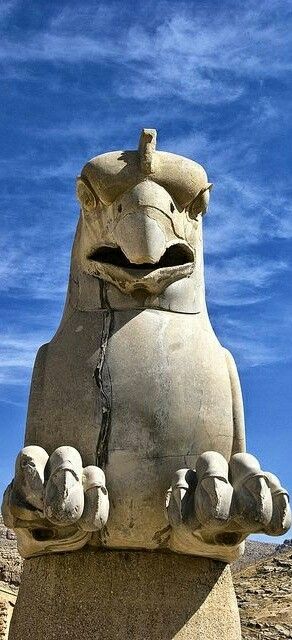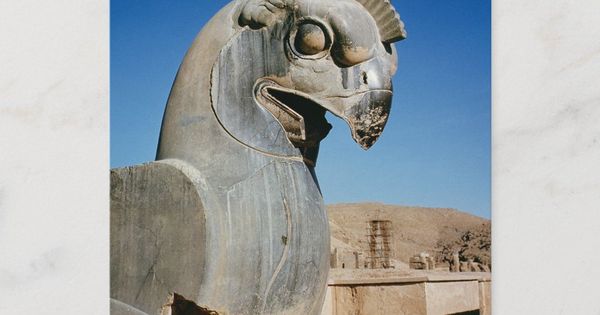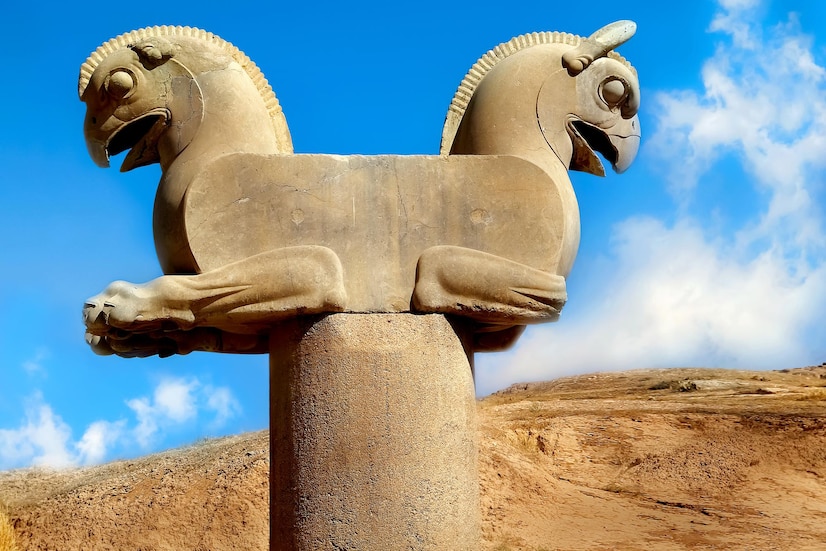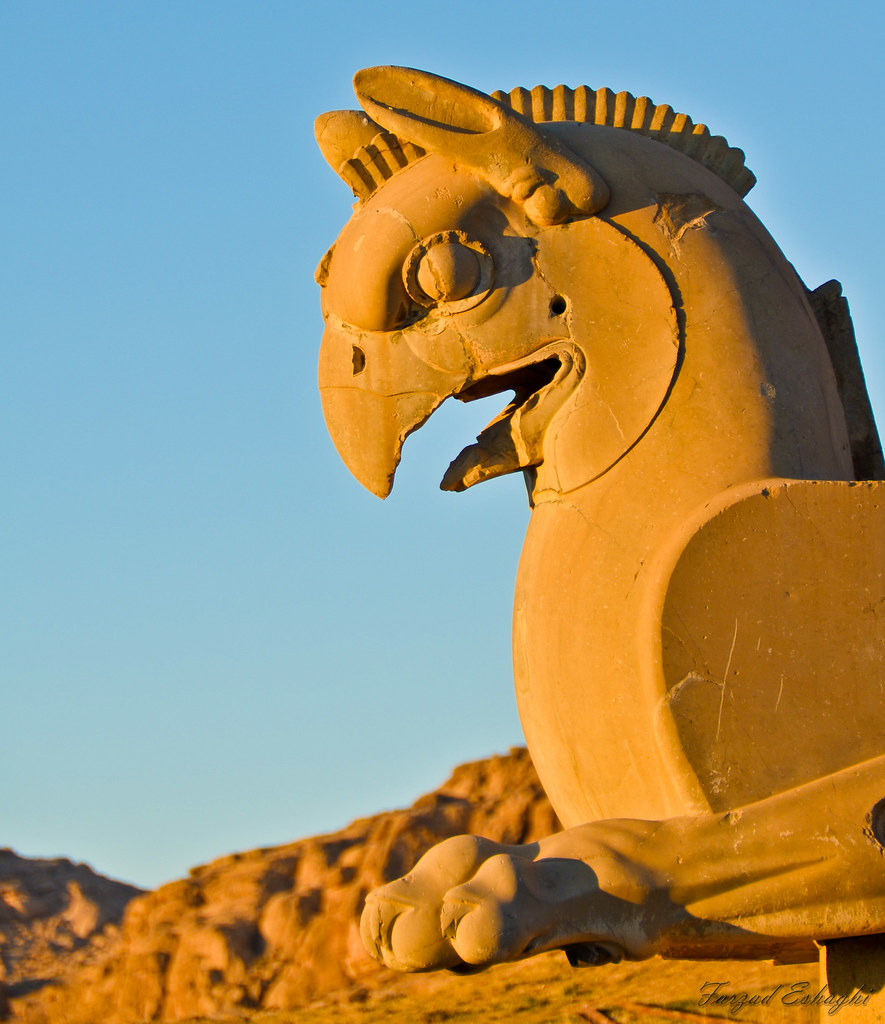The Giant Griffin of Persepolis, created between 516 and 465 BC, is one of the most remarkable symbols of the Achaemenid Empire’s grandeur and artistic sophistication. Standing as a testament to the legacy of Darius I and his successors, the griffin relief at Persepolis offers a glimpse into the empire’s profound cultural and architectural achievements. Located in what was once the heart of the ancient Persian Empire, the griffin serves as a silent narrator of a bygone era, capturing the empire’s majestic past in stone.

Persepolis: The Heart of the Achaemenid Empire
Founded by Darius I in 518 BC, Persepolis was not just a city, but a symbol of the Achaemenid Empire’s might and prosperity. Positioned at the foot of the Mountain of Mercy, around 650 km (400 miles) from modern-day Tehran, Persepolis was an ideal location for this ceremonial capital. The site became the center for imperial administration, royal ceremonies, and the gathering of tribute from across the vast empire, stretching from the Indus River in the east to Egypt in the west.

Persepolis is renowned for its monumental architecture, with grand palaces, impressive terraces, and intricate reliefs. Despite the devastation brought by Alexander the Great in 330 BC, Persepolis’ ruins continue to echo the empire’s former glory, offering invaluable insights into the artistry and culture of ancient Persia. The site was eventually designated as a UNESCO World Heritage site due to its outstanding universal value.
The Symbolism of the Griffin
The Giant Griffin found in Persepolis is a powerful example of Achaemenid art and symbolism. This hybrid creature, with the body of a lion and the wings and head of an eagle, was believed to serve as a protector. The griffin, a common symbol in ancient Near Eastern art, represented strength, courage, and divine protection—qualities that were highly revered in Persian culture.

At Persepolis, the griffin relief likely functioned as a guardian figure, standing watch over the royal structures and ceremonial spaces. It may have been part of a larger architectural feature, such as an entranceway or gateway, where it would greet visitors and protect the sacred grounds. Its size and intricate design reflect the advanced craftsmanship of the Achaemenid artisans, who mastered the art of stone carving with precision.
The Legacy of Persepolis and the Griffin
While the Giant Griffin is a fragment of a much larger structure, it continues to captivate visitors and scholars alike. The Achaemenid Empire was one of the most powerful civilizations of the ancient world, and Persepolis stands as one of its most enduring legacies. Though much of the city was destroyed during Alexander’s invasion, the surviving ruins—along with the griffin relief—offer a window into a culture that valued architectural splendor, artistic innovation, and divine symbolism.

The Giant Griffin also stands as a reminder of the interconnectedness of ancient cultures in the Near East. The Persian Empire was not isolated but drew influences from neighboring civilizations, such as the Mesopotamians and Egyptians, while also leaving its own distinct mark on history. The griffin’s design showcases a blend of cultural symbols, marking the empire’s role as both a military and cultural powerhouse.
Conclusion: A Silent Testimony to an Ancient Civilization
Today, the Giant Griffin of Persepolis remains a monumental symbol of the Achaemenid Empire’s artistic mastery, standing as a testament to the ingenuity of its builders and the vastness of their empire. Its carved stone form continues to offer a glimpse into a once-thriving civilization that stretched across three continents. As visitors stand before this powerful figure, it serves as a reminder of the Achaemenid vision: an empire united under the protection of divine guardians, its legacy etched in the very stones of Persepolis.

